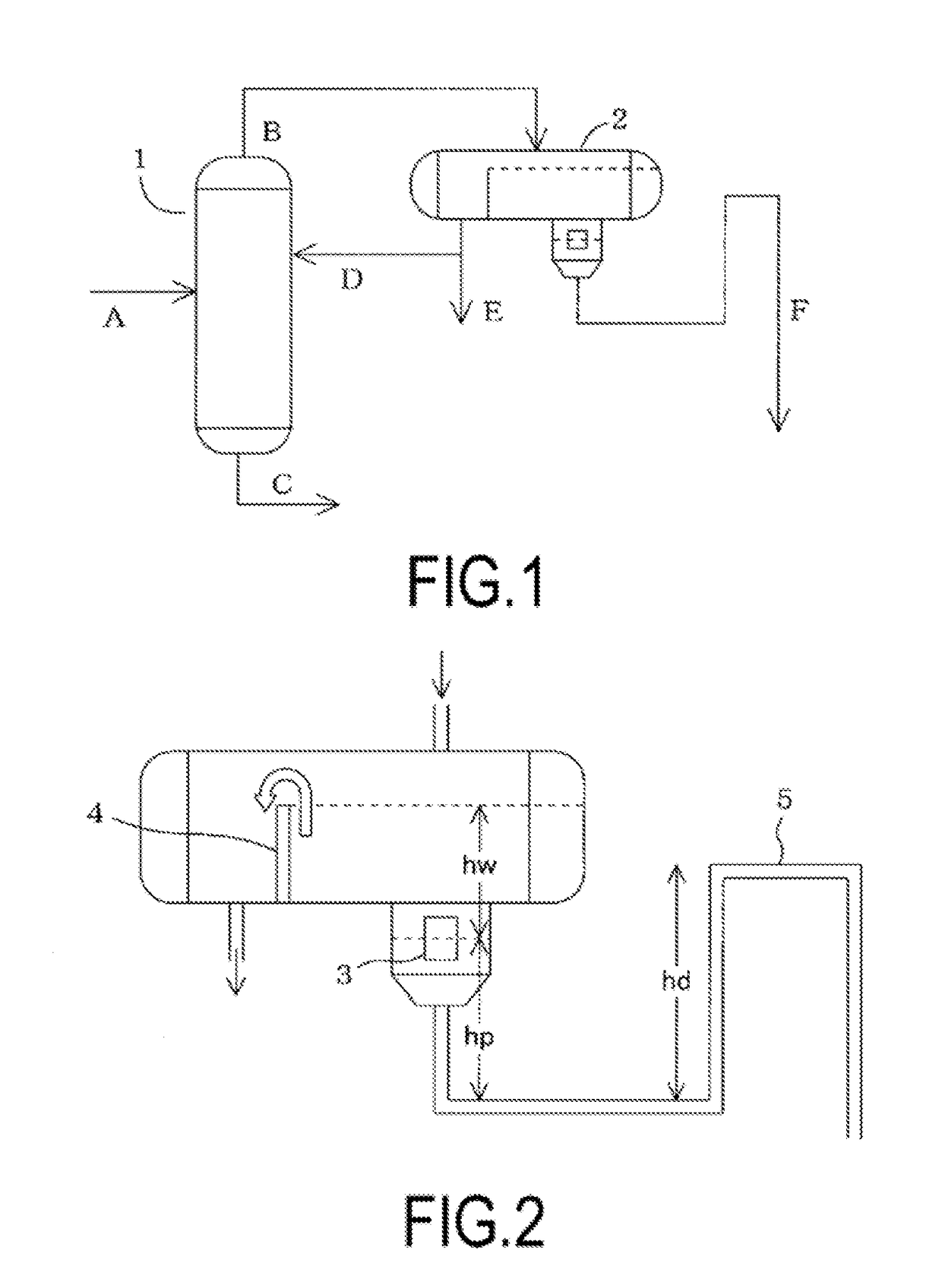Polyarylene sulfide production method and polyarylene sulfide produced using production method
a polyarylene sulfide and production method technology, applied in the field of polyarylene sulfide production, can solve the problems of unreacted dha (in particular, pdcb) discharge, unreacted reaction and/or remaining in the polymerization reaction solution, and insufficient reaction, so as to enhance the competitive power of pas as a plastic, stable production, and reduce production cost
- Summary
- Abstract
- Description
- Claims
- Application Information
AI Technical Summary
Benefits of technology
Problems solved by technology
Method used
Image
Examples
production example 1 (
Preparation of PAS)
Dehydration Step
[0143]A dehydration step was performed by charging 600 kg of NMP, 185 kg of sodium hydrosulfide having a concentration of 62.4 mass % (2,042 mol in terms of NaSH), and 110 kg (2,158 mol) of sodium hydroxide having a concentration of 73.6 mass % into a reaction vessel and heating until the temperature inside the reaction vessel reached 200° C. The amount of hydrogen sulfide volatilized in this dehydration step was 0.57 kg (17 mol). When the amount of the sulfur source inside the reaction vessel (charged sulfur source) was calculated using this value, the amount was 2,025 mol.
Polymerization Step
[0144]First, 303.6 kg (2,065 mol) of commercially available pDCB was charged into the reaction vessel as a raw material for PAS production (pDCB / sulfur source (molar ratio)=1.02), and after the composition was heated to 220° C. and reacted for 1 hour, the composition was further heated to 230° C. and further reacted for 1.5 hours. Next, 14.6 kg of water was fe...
example 1
[0148]A solution prepared by mixing the separated liquid stored in the separated liquid tank in the separation step and the washing discharge liquid stored in the washing discharge liquid tank in the washing step in Production Example 1 was used as a water-containing liquid mixture. By distilling the water-containing liquid mixture using a distillation column for recovering an organic solvent, the acetone of the column top fraction was recovered, and the water-containing liquid mixture at the base of the column was used in the recovery step.
Unreacted pDCB Recovery Step
[0149]A steam distillation column with a stationary reflux device was used, and the temperature of the base of the column was set to 210° C., while the temperature at the top of the column was set to 100° C. The column top fraction (distillate) was recovered from the top of the column by steam distillation.
The column top fraction was guided into a stationary reflux device having a partition plate. Water and pDCB were s...
example 2
[0151]Unreacted pDCB Recovery Step
[0152]In this example, pDCB was recovered in the same manner as in Example 1 with the exception that the reflux ratio was set to 1.5.
The purity of the pDCB recovered by steam distillation was 98.5 mass %.
The recovery rate of the recovered pDCB was 2 mass % on the basis of the pDCB used in Production Example 1.
Unreacted pDCB Reusing Step
[0153]PAS was produced in the same manner as in the PAS production method of Example 1 with the exception that all of the pDCB recovered by steam distillation was used. The phenol content in the obtained slurry solution was 2,000 ppm.
The melt viscosity of the PAS produced using the recovered pDCB was 45 Pa·s. In addition, the thermal stability at the time of molding was equivalent to that of Production Example 1.
The purity of the recovered unreacted pDCB and the melt viscosity of the PAS are shown in Table 1.
PUM
| Property | Measurement | Unit |
|---|---|---|
| particle size | aaaaa | aaaaa |
| melt viscosity | aaaaa | aaaaa |
| temperature | aaaaa | aaaaa |
Abstract
Description
Claims
Application Information
 Login to View More
Login to View More - R&D
- Intellectual Property
- Life Sciences
- Materials
- Tech Scout
- Unparalleled Data Quality
- Higher Quality Content
- 60% Fewer Hallucinations
Browse by: Latest US Patents, China's latest patents, Technical Efficacy Thesaurus, Application Domain, Technology Topic, Popular Technical Reports.
© 2025 PatSnap. All rights reserved.Legal|Privacy policy|Modern Slavery Act Transparency Statement|Sitemap|About US| Contact US: help@patsnap.com

